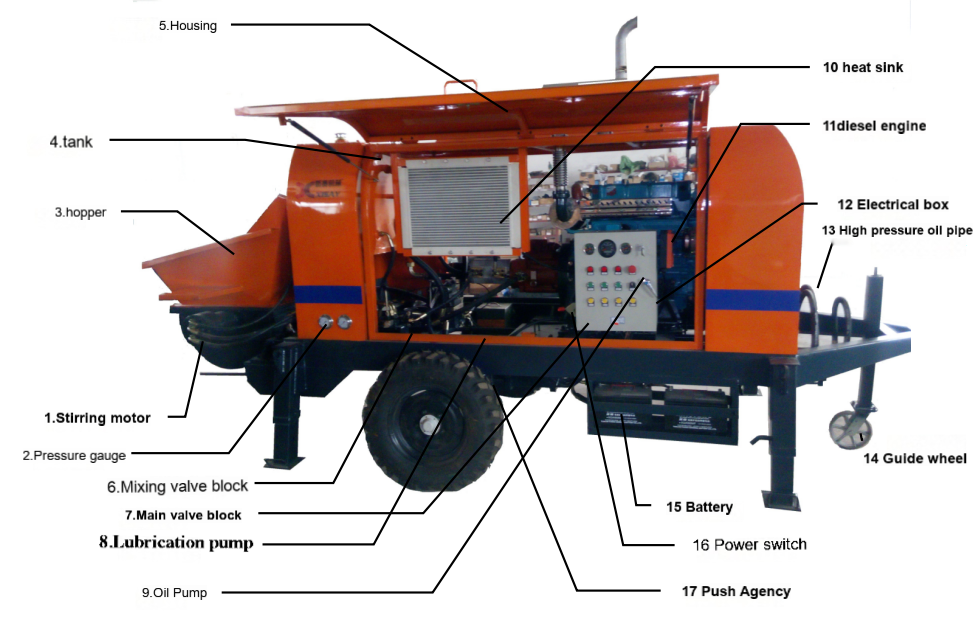The structure and principle of concrete pump
The concrete pump, a vital equipment in construction, boasts a complex yet functional structure. It mainly consists of several key components that work in harmony to achieve efficient pumping.
Firstly, the hydraulic tank serves as the heart, storing hydraulic oil essential for power transmission. Adjacent to it, the radiator ensures the system remains cool by dissipating heat. The diesel engine, positioned strategically, provides the necessary power to drive the entire pump.
The material hopper (or feed hopper), labeled as 3, holds the concrete before it’s pumped. This is followed by the mixing motor (1), which in some models aids in maintaining concrete consistency during pumping. The pressure gauge (2) monitors the system’s pressure, ensuring safe operation.
Crucial for the pumping action are the mixing valve block (6) and main valve block (7). These components regulate the flow and direction of concrete, ensuring it reaches the desired location accurately. The lubrication pump (8) keeps moving parts well-lubricated, reducing wear and tear.
The high-pressure oil tube (13) connects vital hydraulic components, transmitting high-pressure oil to activate the pumping mechanism. Meanwhile, the electrical box (both 12 and mentioned in the image text) houses electrical controls, governing the pump’s operations.
The concrete pump also features a battery (15) as a backup power source, ensuring uninterrupted operation. The power switch (16), easily accessible, allows operators to start and stop the pump swiftly.
The pumping principle of the concrete pump is a hydraulic pump. The hydraulic oil under pressure pushes the piston in the pumping cylinder, forcing the concrete through the delivery pipe. The delivery pipe extends to the pouring site.
With its robust structure and efficient pumping principle, the concrete pump has revolutionized concrete placement in construction. Its ability to pump concrete at high pressures and long distances has made it indispensable in modern building projects.

